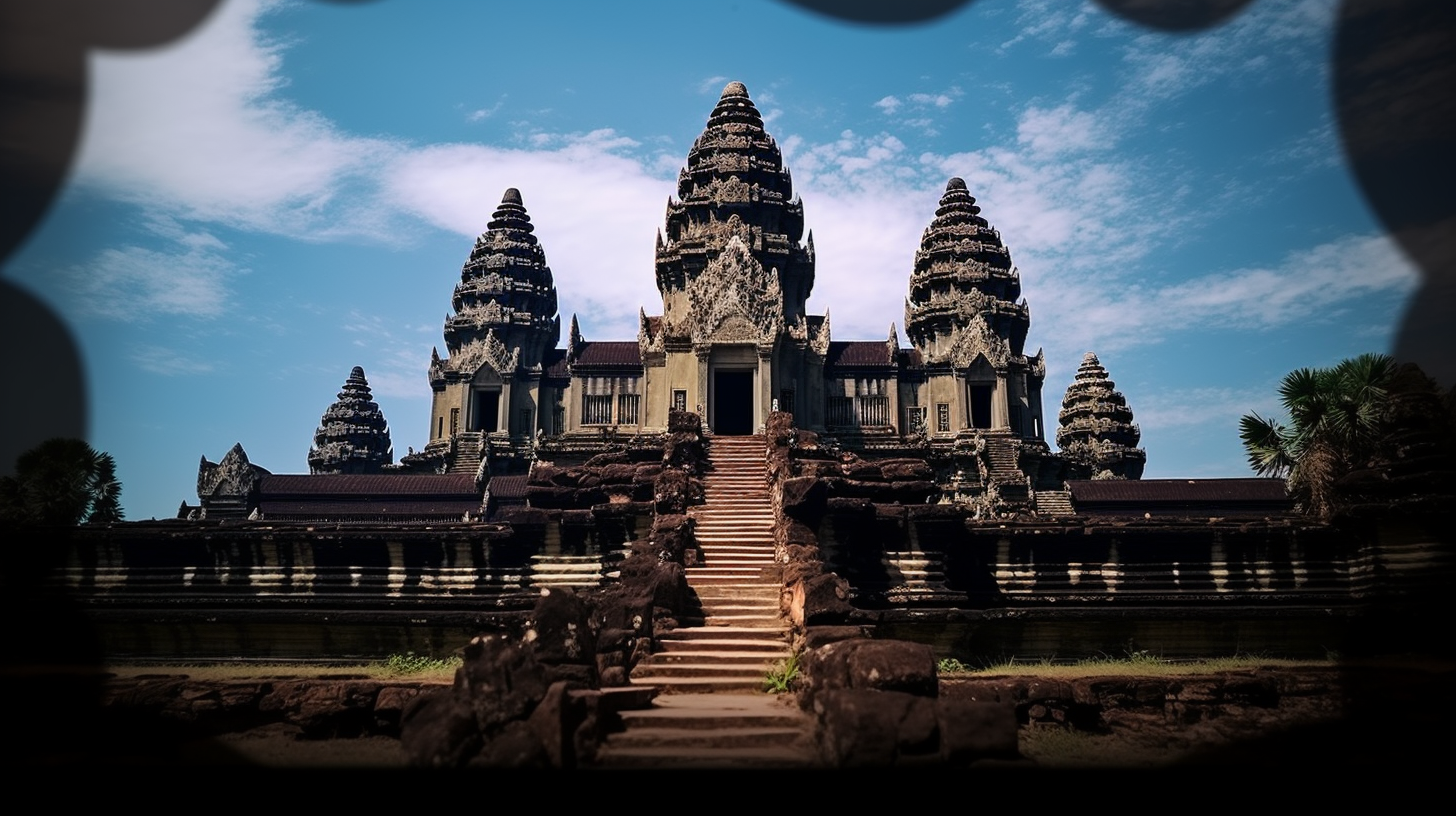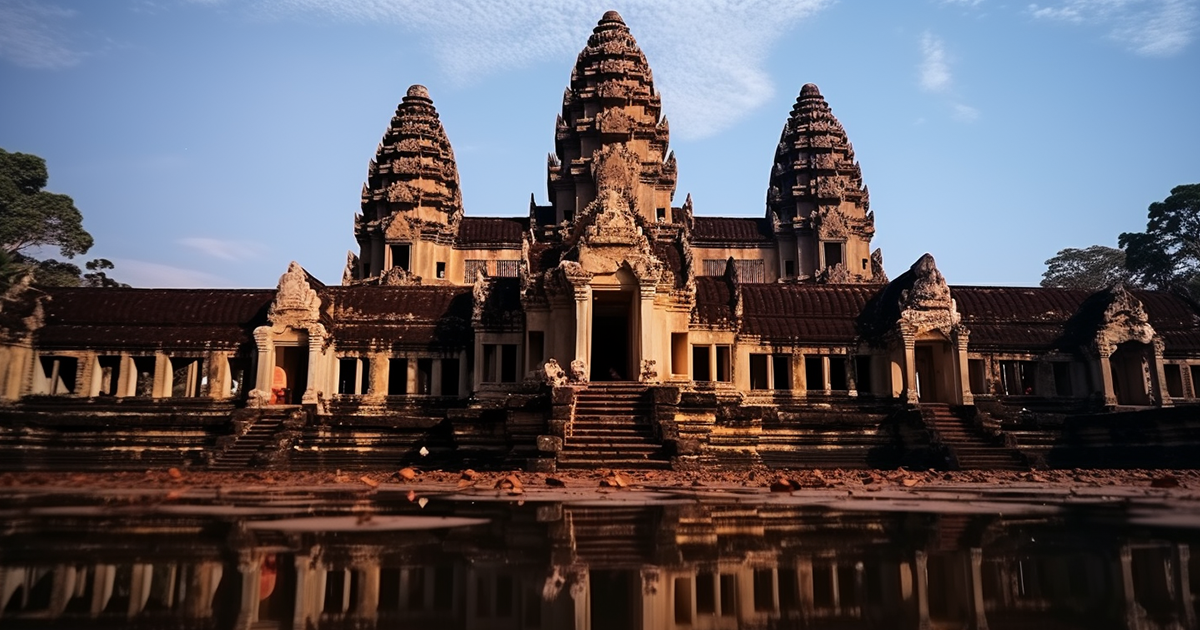Situated deep within the Cambodian landscape, on the fringes of Siem Reap, stands Angkor Wat – an expansive structure that has fascinated historians, archaeologists, and mythologists for ages. This immense temple complex, spanning close to a mile on all sides, has always held a mesmerizing charm.
Although conventional archaeological beliefs pinpoint its origins to the 12th century A.D., Cambodian folklore traces its roots even further back, to 600 B.C.
Local legends propose that Angkor Wat was not merely a product of human craftsmanship but instead was created by a being straddling the realms of mortals and deities.
The tale narrates the story of Priya Pisnakar, the architect’s mother, descending from a celestial realm beyond ours, yearning to reunite with her son in her heavenly abode. This enthralling storyline is just one of the many mysteries encircling Angkor Wat.

In 1996, John Grigsby, a dedicated researcher and writer, chanced upon a remarkable alignment within Angkor Wat that has left experts and enthusiasts alike amazed. Grigsby’s finding revealed a striking correlation between Angkor Wat and the Draco constellation, deriving its name from the Latin word for “dragon.”
By superimposing a map of the Draco constellation onto Angkor Wat’s layout, Grigsby illuminated how multiple structures within the temple complex impeccably matched the primary stars of the Draco constellation.
The immediate query arises: what importance does this cosmic alignment hold? Why did the builders of Angkor Wat go to such great lengths to reflect the Draco constellation?
Some scholars propose that this alignment might have served as a symbolic gesture, showcasing to the local populace the celestial lineage of their creators and guides. Constructing a monumental edifice resembling their stellar origins would vividly convey their extraterrestrial ancestry.
The connection between Angkor Wat and the Draco constellation transcends mere architectural likeness. The temple showcases depictions of dragon-like creatures, indicating a profound tie between Angkor Wat and the Draco constellation. In South Asian traditions, these creatures, known as nagas, bear significant symbolic meanings.

Revered as potent entities, shape-shifters, and custodians of wisdom and knowledge, these nagas potentially symbolize the inhabitants of the Draco constellation or advanced extraterrestrial beings.
Heightening the intrigue of this cosmic correlation is that Angkor Wat is not the sole ancient site linked to Draco. Across the world, in Ohio, the Native American Serpent Mound aligns precisely with Draco.
Likewise, in ancient Egypt, the pyramids were strategically positioned so that their entrance aligned with Draco’s principal star, Alva Draconis, ensuring its visibility during nighttime. These alignments hint at the captivating notion that the Draco constellation influenced the evolution of dragon folklore across multiple cultures.
The prevalence of dragon myths globally has sparked speculation that these mythical entities could have been extraterrestrial visitors from a planet within the Draco constellation. This intriguing hypothesis postulates that ancient civilizations bore witness to their arrival, immortalizing them in their myths and legends.
Witness the captivating video below:
Probing into these ancient enigmas urges us to ponder whether esoteric insights into our cosmic origins have always dwelled within humanity’s collective consciousness. Could it be that our fascination with celestial alignments and dragons echoes this ancient wisdom?
While navigating through the mysteries of Angkor Wat and its connection to the Draco constellation may pose challenges, it undeniably serves as a testament to the enduring appeal of ancient riddles that continue to captivate our minds.
